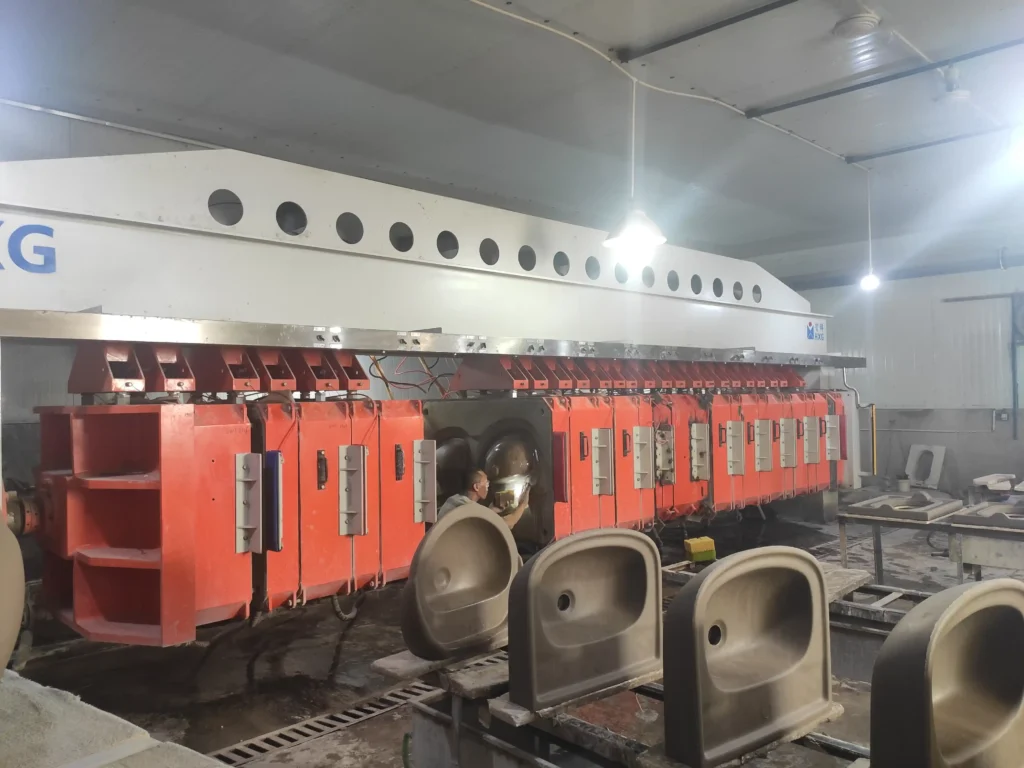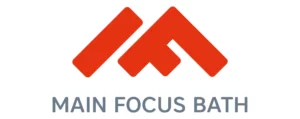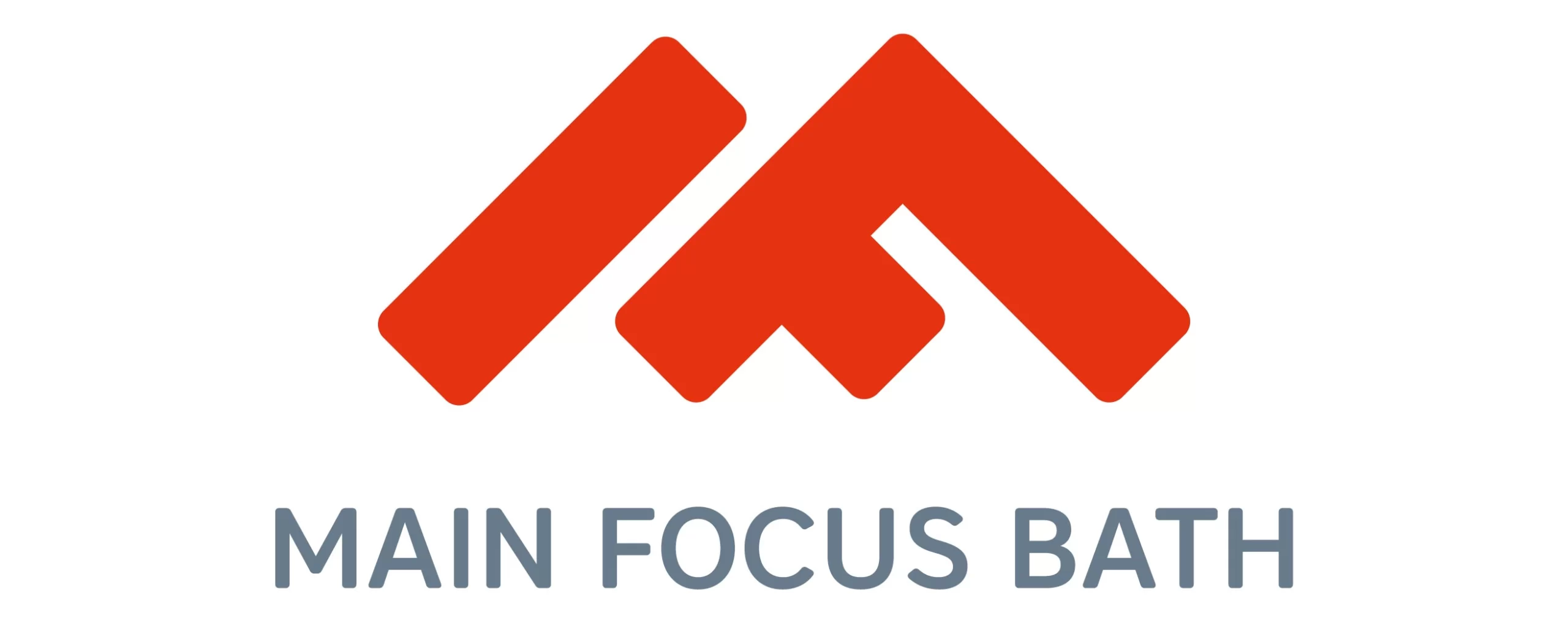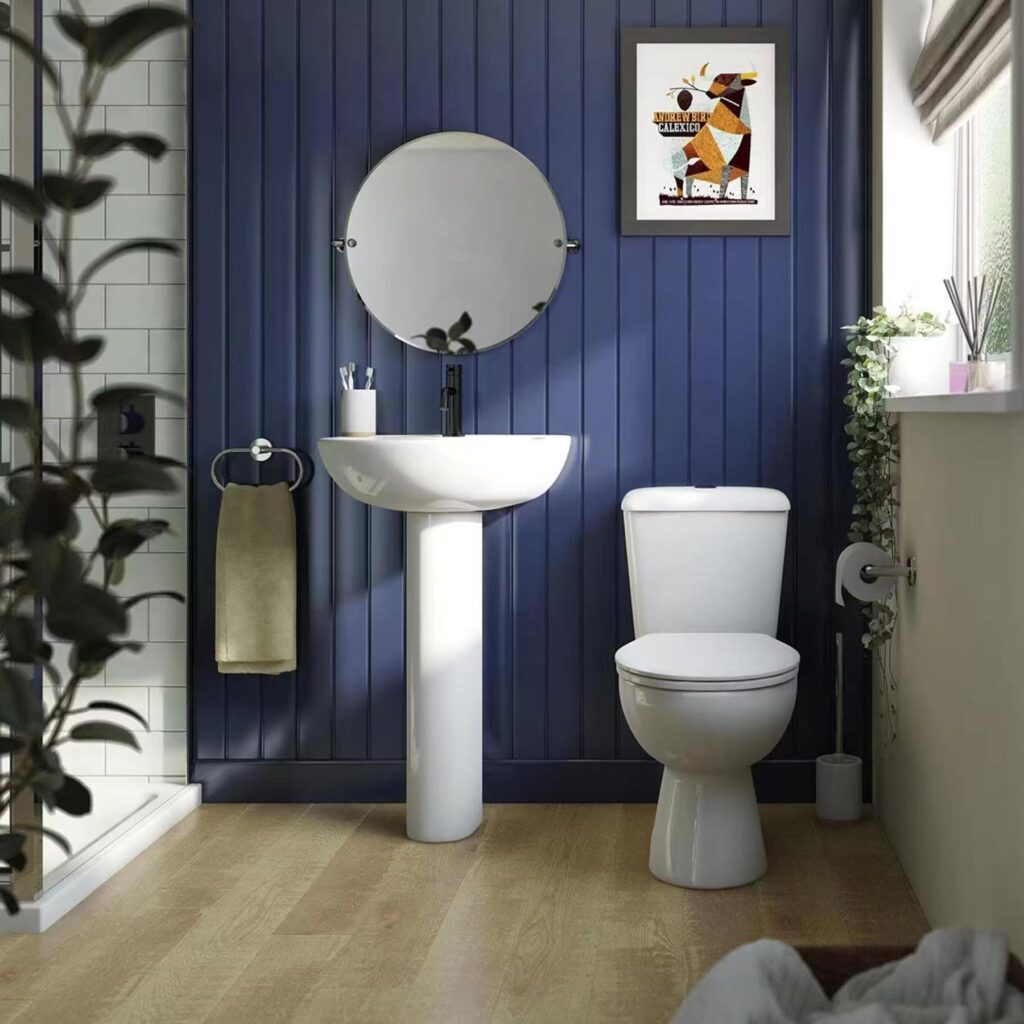Wstęp
Importing sanitary ware from China can be a minefield of quality issues, shipping delays, and compliance headaches. For sourcing agents and international buyers, one wrong move could mean costly returns or damaged reputations. But here’s a game-changer: pre-shipping inspections can slash product return rates by up to 40%.
Navigating the complex world of ceramic toilets, basins, and other bathroom fittings doesn’t have to be a guessing game. With the right approach, you can tap into China’s high-quality, cost-effective sanitary ware market while sidestepping common pitfalls. This step-by-step guide will walk you through the entire process, from vetting CE-certified suppliers to mastering customs regulations and optimizing your logistics chain.
Drawing on over a decade of industry experience, we’ll explore how to build efficient, compliant supply chains that deliver consistent quality. Whether you’re new to importing or looking to streamline your current processes, you’ll find actionable strategies to ensure your sanitary ware imports arrive on time, on budget, and up to standard.
Why Import Sanitary Ware from China?
In the world of bathroom fixtures, China has emerged as a “go-to” powerhouse for importing sanitary ware. But what makes Chinese manufacturers so attractive to global buyers? Let’s dive into the reasons why importing sanitary ware from China can be a game-changer for your business.
Benefits of Sourcing from China: Cost Savings and Scale
When it comes to sanitary ware, China offers unbeatable advantages in terms of cost and production capacity. Chinese manufacturers have mastered the art of producing high-quality products at competitive prices, thanks to their advanced manufacturing techniques and economies of scale.
By importing sanitary ware from China, businesses can significantly reduce their procurement costs without compromising on quality. This cost-effectiveness allows companies to maintain healthy profit margins while offering competitive prices to their customers.
“Importing sanitary ware from China can lead to substantial cost savings, often up to 30-40% compared to domestic manufacturing in many countries.”
Overview of Sanitary Ware Products: Ceramic Toilets, Basins, and More
Chinese manufacturers offer a wide range of sanitary ware products, including ceramic toilets, basins, bidets, and smart toilets. The variety of designs, styles, and functionalities available caters to diverse market needs and preferences.
For instance, ceramic toilet import from China provides access to everything from basic models to high-end, water-efficient designs. Similarly, basins come in various shapes, sizes, and mounting options, allowing buyers to find the perfect fit for any bathroom project.
China’s Role in Global Sanitary Ware Manufacturing
China has established itself as a global leader in sanitary ware manufacturing. The country’s robust infrastructure, skilled workforce, and continuous technological advancements have positioned it at the forefront of the industry.
Many sanitary ware suppliers in China have invested heavily in research and development, resulting in innovative products that meet international standards. This commitment to quality and innovation has made Chinese manufacturers preferred partners for businesses worldwide.
Global Market Share of Sanitary Ware Production (2024 Estimates)
| Country/Region | Market Share (%) | Annual Production (Million Units) | Export Value (Billion USD) | Key Product Categories |
|---|---|---|---|---|
| China | 35% | 210 | 12.5 | Ceramic Toilets, Basins, Smart Toilets |
| European Union | 20% | 120 | 8.2 | Designer Fixtures, High-End Toilets |
| India | 15% | 90 | 3.7 | Budget Toilets, Traditional Designs |
| North America | 12% | 72 | 5.8 | Water-Efficient Models, Smart Toilets |
| Rest of World | 18% | 108 | 6.3 | Various Regional Specialties |
Market Trends Driving Demand for Chinese Sanitary Ware in 2025
As we look towards 2025, several trends are shaping the demand for Chinese sanitary ware:
1. Sustainability: Increasing focus on water-efficient and eco-friendly designs.
2. Smart Technology: Growing interest in smart toilets and touchless fixtures.
3. Customization: Rising demand for personalized bathroom solutions.
4. Cost-effectiveness: Continued emphasis on value for money without compromising quality.
These trends highlight the importance of partnering with trusted manufacturers like MFBath. By choosing CE-certified products from reputable suppliers, businesses can ensure they meet global compliance standards for commercial projects.
For those new to importing, following a step-by-step guide for importing sanitary ware from China can be invaluable. It’s crucial to build strong relationships with suppliers and leverage local expertise to ensure long-term success in this competitive market.
In conclusion, importing sanitary ware from China offers a compelling combination of cost savings, product variety, and quality. As the global demand for innovative bathroom solutions continues to grow, Chinese manufacturers are well-positioned to meet these needs, making them an attractive option for businesses looking to stay competitive in the sanitary ware market.

Selecting Reliable Sanitary Ware Suppliers
When it comes to importing sanitary ware from China, choosing the right supplier is crucial for your business’s success. Let’s explore how to find and partner with trustworthy manufacturers who can deliver quality products consistently.
Researching Suppliers: Platforms, Trade Shows, and Certifications
The first step in finding reliable sanitary ware suppliers in China is thorough research. Start by exploring online platforms like Alibaba or Global Sources, which offer a wide range of suppliers. However, don’t stop there – attending trade shows like the Canton Fair can provide valuable face-to-face interactions with potential partners.
Look for suppliers who showcase their certifications prominently. Certifications like ISO 9001 for quality management systems and ISO 14001 for environmental management are good indicators of a supplier’s commitment to quality and sustainability.
“Selecting a certified supplier can reduce quality control issues by up to 40% compared to working with non-certified manufacturers.”
Importance of CE Certifications and Industry Standards
When importing bathroom fittings, CE certification is crucial, especially for European markets. This certification ensures that products meet EU health, safety, and environmental protection standards. Always ask potential suppliers for their CE certificates and verify their authenticity.
Additionally, look for suppliers who adhere to international standards like ANSI (American National Standards Institute) or BS (British Standards). These standards ensure that the sanitary ware you import meets global quality benchmarks.
Evaluating Supplier Track Records and Communication
A supplier’s history can tell you a lot about their reliability. Request references from their past clients and check online reviews. Pay attention to how they handle communication – prompt, clear responses are a good sign of professionalism.
Consider the following factors when evaluating potential partners:
Key Factors in Sanitary Ware Supplier Evaluation
| Evaluation Criteria | Importance (1-5) | Industry Average | Top Performers | Wydajność MFBath |
|---|---|---|---|---|
| Years in Business | 4 | 7-10 years | 15+ years | 20+ years |
| Quality Control Measures | 5 | Basic QC | Advanced QC Systems | Comprehensive QC with AI integration |
| On-Time Delivery Rate | 5 | 85-90% | 95-98% | 98% |
| Customization Capabilities | 3 | Limited | Extensive | Full customization available |
| After-Sales Support | 4 | Basic warranty | Extended warranty + support | Lifetime support + training |
Building Long-Term Relationships with Manufacturers like MFBath
Once you’ve identified a reliable supplier, focus on building a long-term relationship. This approach can lead to better pricing, priority production slots, and even customized products tailored to your market needs.
At MFBath, we pride ourselves on being more than just a supplier – we aim to be a “buddy” to our clients. Our commitment to customization options and consistent quality helps reduce procurement risks and supports scalable supply chains for international buyers.
Here’s how to nurture a strong partnership with your chosen supplier:
1. Regular communication: Schedule periodic check-ins to discuss market trends and upcoming needs.
2. Feedback loop: Provide constructive feedback on products and processes to foster continuous improvement.
3. Mutual growth: Look for opportunities to expand your business together, such as entering new markets or developing innovative products.
4. Transparency: Be open about your business goals and challenges. This allows suppliers to better align their services with your needs.
Remember, the key to how to find reliable sanitary ware suppliers in China lies not just in initial vetting, but in cultivating lasting partnerships. By following these steps and prioritizing quality and communication, you can build a robust supply chain that supports your business’s growth and reputation in the competitive sanitary ware market.

Ensuring Quality Control for Sanitary Ware Imports
When importing sanitary ware from China, maintaining product quality is crucial for your business’s success and reputation. Let’s explore the best practices for quality control that can help minimize returns and ensure customer satisfaction.
Importance of Pre-Shipping Inspections: Reducing Returns by 40%
Pre-shipping inspections are a “Przełapanie gry” in the ceramic toilet import process. These inspections can significantly reduce the risk of receiving subpar products, potentially cutting returns by up to 40%.
Key aspects of pre-shipping inspections include:
1. Visual checks for cracks, chips, or color inconsistencies
2. Functionality tests for flushing mechanisms and water flow
3. Packaging integrity to prevent transit damage
4. Dimensional accuracy checks
“Implementing rigorous pre-shipping inspections can increase overall product quality by 30% and customer satisfaction by 25% in sanitary ware imports.”
Setting Quality Benchmarks for Ceramic Toilets and Basins
Establishing clear quality benchmarks is essential for consistent product quality. These standards should align with international norms and your specific market requirements.
Consider the following benchmarks:
Quality Benchmarks for Ceramic Sanitary Ware
| Quality Aspect | Industry Standard | Premium Standard | MFBath Standard | Testing Method |
|---|---|---|---|---|
| Glaze Thickness | 0.5 – 0.7 mm | 0.8 – 1.0 mm | 0.9 – 1.1 mm | Micrometrical Measurement |
| Water Absorption Rate | < 0.5% | < 0.3% | < 0.2% | 24-hour Immersion Test |
| Flush Efficiency | 250g solid waste | 300g solid waste | 350g solid waste | MaP Testing |
| Surface Hardness (Mohs) | 5 – 6 | 6 – 7 | 7 – 8 | Scratch Test |
| Thermal Shock Resistance | 10 cycles | 15 cycles | 20 cycles | Thermal Cycling Test |
Working with Third-Party Inspection Agencies
Collaborating with reputable third-party inspection agencies can provide an additional layer of quality assurance. These agencies offer unbiased assessments and can help in:
1. Conducting random sampling inspections
2. Verifying compliance with international standards
3. Providing detailed reports on product quality
4. Offering insights on potential improvements
At MFBath, we welcome third-party inspections, as they align with our commitment to transparency and quality excellence in the ceramic sanitary ware manufacturing process.
Common Quality Issues and How to Address Them
Being aware of common quality issues can help you proactively address them. Here are some frequent problems and solutions:
1. Crazing (fine cracks in the glaze): Ensure proper firing temperature and cooling processes.
2. Pinholes: Improve clay preparation and glazing techniques.
3. Warping: Optimize drying and firing schedules.
4. Color inconsistencies: Implement strict quality control in glaze mixing and application.
For successful import of ceramic toilets and basins, it’s crucial to work closely with your supplier to address these issues promptly. At MFBath, our rigorous quality control processes align with international standards, offering buyers confidence in product consistency.
In conclusion, ensuring quality control in importing sanitary ware requires a multi-faceted approach. By implementing pre-shipping inspections, setting clear benchmarks, working with third-party agencies, and addressing common issues proactively, you can significantly reduce the risk of quality-related problems. Remember, building strong relationships with reliable suppliers like MFBath and leveraging their expertise is key to long-term success in the sanitary ware import business.

Navigating Logistics and Shipping for Sanitary Ware
When importing sanitary ware from China, mastering the logistics process is crucial for ensuring your products arrive safely and cost-effectively. Let’s explore the key aspects of shipping these delicate items from factory to destination.
Choosing Freight Forwarders for Fragile Sanitary Ware
Selecting the right freight forwarder is critical when dealing with fragile items like ceramic toilets and basins. Look for forwarders with experience in handling sanitary ware and a track record of successful shipments.
Key factors to consider:
1. Expertise in fragile goods handling
2. Insurance options for high-value shipments
3. Ability to navigate customs efficiently
4. Real-time tracking capabilities
“Partnering with specialized freight forwarders can reduce damage rates in sanitary ware shipments by up to 30% compared to general logistics providers.”
Comparing Shipping Methods: Sea, Air, and Consolidation
When importing bathroom fittings, choosing the right shipping method is crucial for balancing cost and time. Let’s compare the main options:
Shipping Method Comparison for Sanitary Ware
| Method | Transit Time | Cost per CBM | Suitable Order Size | Risk Level |
|---|---|---|---|---|
| Sea Freight (FCL) | 30-40 days | $40-$60 | Large (500+ units) | Low |
| Sea Freight (LCL) | 35-45 days | $70-$90 | Medium (100-500 units) | Medium |
| Air Freight | 5-7 days | $400-$600 | Small (< 100 units) | Low |
| Rail Freight | 18-22 days | $80-$120 | Medium (200-400 units) | Medium |
| Express Courier | 3-5 days | $800-$1000 | Samples (1-10 units) | Very Low |
Packaging Standards to Prevent Damage During Transit
Proper packaging is essential when importing sanitary ware from China. Industry standards include:
1. Individual foam wrapping for each piece
2. Strong corrugated boxes with internal supports
3. “Fragile” and “Handle with Care” labels clearly visible
4. Palletization for easier handling and stacking
At MFBath, we go the extra mile by using custom-designed packaging that exceeds industry standards, significantly reducing transit damage rates.
Managing Timelines and Avoiding Port Delays
Efficient timeline management is crucial in the logistics for sanitary ware import. Here’s a “rock-solid” step-by-step guide for importing sanitary ware from China:
1. Order placement: Day 1
2. Production time: 20-30 days
3. Quality inspection: 2-3 days
4. Packaging and loading: 2-3 days
5. Customs clearance in China: 3-5 days
6. Transit time: Varies by method (refer to the table above)
7. Destination customs clearance: 2-5 days
To avoid port delays:
– Ensure all documentation is complete and accurate
– Consider using a customs broker for complex shipments
– Stay informed about holiday schedules in both origin and destination countries
– Build in buffer time for unexpected delays
By consolidating shipments with reliable logistics partners like those recommended by MFBath, large-scale importers can reduce costs by up to 20%. This approach not only optimizes expenses but also streamlines the entire import process.
In conclusion, successfully importing sanitary ware from China requires careful planning and execution of logistics. By choosing the right freight forwarders, selecting appropriate shipping methods, ensuring proper packaging, and managing timelines effectively, you can ensure your ceramic toilets and basins arrive safely and on time. Remember, building strong relationships with both suppliers and logistics partners is key to long-term success in the sanitary ware import business.

Mastering Customs and Compliance for Seamless Imports
Navigating customs regulations and documentation is crucial when importing sanitary ware from China. Let’s explore the key steps to ensure a smooth, compliant import process for your ceramic toilets and basins.
Understanding China’s Export Regulations
Before diving into import procedures, it’s essential to grasp China’s export regulations for sanitary products. These rules ensure that products meet quality standards and comply with international trade agreements.
Key aspects to consider:
1. Export licenses for certain sanitary ware categories
2. Quality control inspections before shipment
3. Adherence to environmental and safety standards
4. Proper labeling and packaging requirements
“Understanding and complying with China’s export regulations can reduce customs delays by up to 40% and minimize the risk of shipment rejections.”
Preparing Essential Documentation: Invoices, Packing Lists, and Certificates
Proper documentation is the backbone of successful import procedures for sanitary products. Here’s a “must-have” checklist:
Essential Documentation for Sanitary Ware Imports
| Document Type | Purpose | Key Information | Issuing Authority | Validity Period |
|---|---|---|---|---|
| Commercial Invoice | Declares value for customs | Product details, quantity, price | Exporter (e.g., MFBath) | Per shipment |
| Packing List | Details shipment contents | Item count, weights, dimensions | Exporter (e.g., MFBath) | Per shipment |
| Certificate of Origin | Confirms product origin | Manufacturing location, HS codes | Chamber of Commerce | Per shipment |
| CE Certificate | Proves EU standard compliance | Product specifications, test results | Accredited Testing Lab | 1-5 years |
| Bill of Lading | Shipping contract | Shipping details, cargo description | Shipping Company | Per shipment |
Calculating Import Duties and Taxes for Budgeting
Accurate calculation of import duties and taxes is crucial for budgeting and pricing your sanitary ware. Factors affecting these costs include:
1. Harmonized System (HS) code classification
2. Country of origin
3. Value of goods
4. Any applicable trade agreements
For example, ceramic toilets often fall under HS code 6910.10, which may have different duty rates depending on your country’s regulations. It’s advisable to consult with a customs broker or use online duty calculators for precise estimates.
Common Customs Challenges and Solutions
Even experienced importers face challenges. Here are some common issues and tips for successful import of ceramic toilets and basins:
1. Misclassification: Double-check HS codes with customs experts.
2. Incomplete documentation: Use a comprehensive checklist for each shipment.
3. Undervaluation concerns: Provide detailed breakdowns of costs to justify declared values.
4. Compliance with safety standards: Work with sanitary ware suppliers in China who are familiar with international standards.
At MFBath, we streamline the documentation process, helping buyers avoid costly customs errors and expedite clearance. Our expertise in export procedures ensures that all necessary certificates and forms are prepared accurately and promptly.
Remember, building strong relationships with reliable suppliers like MFBath and leveraging their local expertise is key to navigating the complex world of customs and compliance. By following these guidelines and working with experienced partners, you can ensure a smooth, efficient import process for your sanitary ware products.
Wniosek
After a decade in the sanitary ware game, I’ve seen firsthand how importing from China can be a real “Przełapanie gry” for businesses. From cost savings to innovative designs, the benefits are clear. But remember, success hinges on partnering with the right suppliers and mastering the import process.
At MFBath, we’re not just about selling products; we’re about building relationships and ensuring your success. Whether you’re navigating customs hurdles or seeking the latest in smart toilet technology, we’ve got your back. The sanitary ware market is evolving rapidly, and staying ahead means staying informed and adaptable.
So, as you embark on your import journey, keep quality, compliance, and customer satisfaction at the forefront. With the right approach and a trusted partner like MFBath, you’re not just importing products – you’re importing success.
FAQ
-
Q1: What are the steps to import sanitary ware from China?
A1: To import sanitary ware from China, follow these steps: Identify reliable suppliers, conduct quality checks, understand import regulations, negotiate pricing and payment terms, manage shipping logistics, and ensure compliance with local laws.
-
Q2: How can I find reliable suppliers of sanitary ware in China?
A2: To find reliable suppliers of sanitary ware in China, utilize platforms like Alibaba, attend trade shows, or consult sourcing agents who specialize in Chinese manufacturing.
-
Q3: What are the import duties on sanitary ware from China?
A3: The import duties on sanitary ware from China vary by country and product type. It’s essential to check the Harmonized System (HS) code for accurate duty rates and regulations.
-
Q4: What quality control measures should I take when importing sanitary ware?
A4: Implement quality control measures such as pre-shipment inspections, factory audits, and third-party testing to ensure that the sanitary ware meets your quality standards.
-
Q5: What shipping methods are best for importing sanitary ware from China?
A5: The best shipping methods for importing sanitary ware from China include sea freight for bulk shipments and air freight for urgent orders, considering cost, speed, and volume.
-
Q6: What documentation is needed for importing sanitary ware?
A6: Documentation for importing sanitary ware typically includes a commercial invoice, packing list, bill of lading, certificate of origin, and any necessary import permits.
-
Q7: What should I consider regarding compliance when importing from China?
A7: When importing from China, ensure compliance with safety standards, labeling requirements, and product certifications specific to sanitary ware in your destination country.
-
Q8: How can I minimize shipping costs when importing sanitary ware from China?
A8: To minimize shipping costs when importing sanitary ware from China, consolidate shipments, negotiate rates with freight forwarders, and choose economical shipping methods.






